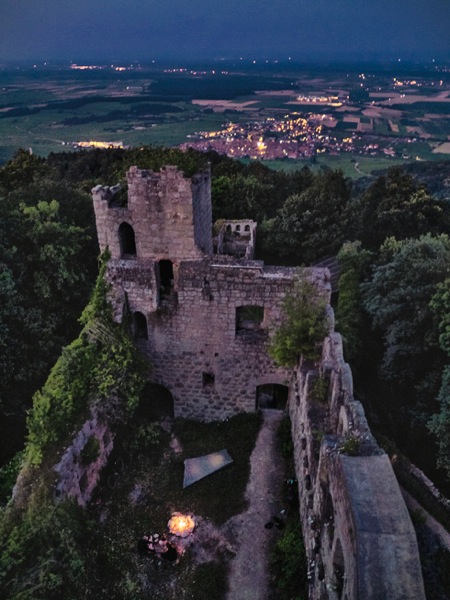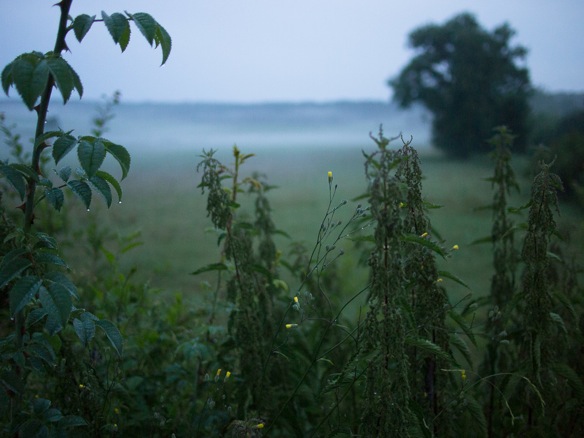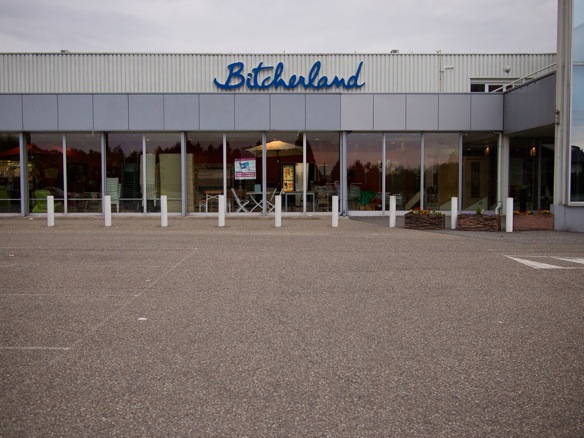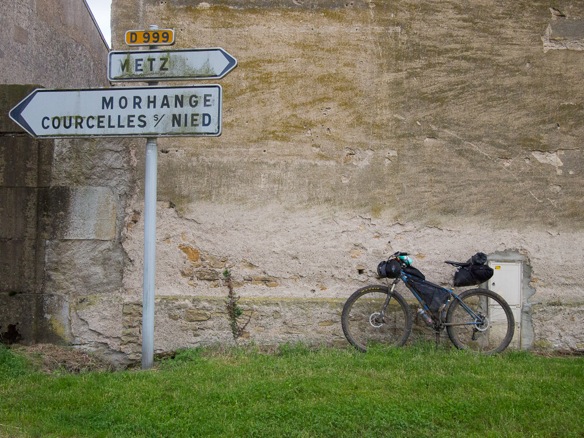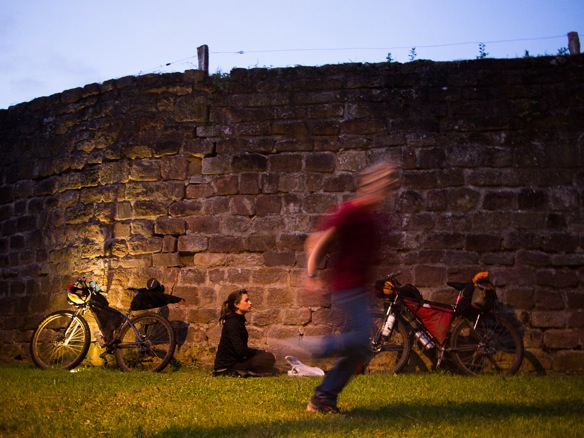 Luxembourg, GR5/E2 trail
Luxembourg, GR5/E2 trail
Two years ago I wondered about bikepacking routes in Europe. After eight months of riding, researching, and blogging from Amsterdam to Sevastapol to Athens, this resource is the culmination of our efforts. Europe is a great place to explore by bike, off-pavement, and self-supported. Eat great food, visit fascinating cultural and historical places, and learn new languages, in between bike rides. In Europe, there are rides and routes for every interest and skill level. Use the search function or the archives on this page to learn more about our rides in Europe through the Netherlands, Belgium, Luxembourg, France, Czech, Slovakia, Poland, Ukraine, Serbia, Montenegro, Albania, Kosovo, and Greece. Read more about our adventures across Europe in the Bicycle Times article Bikepacking Europe: North Sea to the Black Sea.
This is an incomplete list of European bikepacking routes. These routes are either mapped, signed, and/or available as GPS tracks. Many routes originate as self-supported off-pavement endurance races, multi-day stage races, or challenging routes for solo ITT. Some are government tourism projects. Others are the creation of avid riders or cycling organizations to promote the riding in their home country. Lastly, some routes suggested here are repurposed walking routes, which may be done in sections or as a whole. One route is currently planned, but is incomplete. Additional rouetplanning resources include online retailers of maps and guides, or digital trail-finder resources. The basic concept of this project is to awaken the world to the breadth of bikepacking possibilities in Europe, despite the lack of a single superstar route such as the Great Divide Route, Colorado Trail, or the Arizona Trail. Bikepacking is a global phenomena, born of the passion to ride somewhere, off the beaten path, self-supported.
Use these links as a springboard to do your own research and riding. Some routes may be easy with significant paved sections, non-technical terrain, and uncomplicated logistics. Others are extremely challenging, with a large component of hike-a-bike.
Any assistance to improve the list is welcomed, including relevant comments about any of the listed routes and new route suggestions with links. When possible the routes are linked to the most informative or relevant webpage, which most often originates from the route organizer or creator. In a few cases, routes are listed without an official webpage or an official GPS route, such as The Red Trail in Poland, but the route is known to exist on the ground, is signed, and is indicated on Compass brand maps (and others). To keep this listing simple I have chosen not to indicate the distance, difficulty, or source of route guidance (map, GPS, signs). These features may come in the future, and if anyone wishes to host this list in further detail, contact me directly. Start dreaming and get riding!
Please use the comment form below and check back in the future as this page develops. Special assistance is needed to include routes from many countries, including: Finland, Sweden, Norway, Iceland, Denmark, Austria, Portugal, Slovenia, Croatia, Romania, Bulgaria, Hungary (The Countrywide Blue Tour?), Serbia, Kosovo, Estonia, Latvia, Lithuania, Ukraine, Belorus, Russia, the Netherlands, and Luxembourg. Israel is not in Europe, but is included due to a growing bikepacking scene. Surely, there are many more routes in the countries listed. Tell your friends. Share it online.
Spain: TransAndalus, Transpirinaica; Transiberia, Camino de Santiago, Camino del Norte, Transcantábrica, Via de la Plata, Camino del Cid; GR 48, Transnevada. Many Spanish route maps and guidebooks available from labiciteca.com.
Portugal: Rota Vicentina, Via Algarviana
France: Traversée du Massif Vosgien, Traversée du Jura (maps), Traversée du Massif Central, GR5/E2 trail; VTTrack.fr for interactive MTB trail map of France
Belgium: GR5/E2 walking trail (general info); also, some images and info about the section in the Ardennes Mountains
Germany: GST: Grenzsteintrophy
UK: Bearbones 200, England-Wales-England, Lakeland 200, Pennine Bridleway, Ridgeway Double, South Downs Double, Coast to Coast, Trans Cambrian, Welsh Coast to Coast; Devon Coast to Coast (Westcountry Way). All routes and links thanks to selfsupportedUK.net.
Scotland: Scotland Coast to Coast, Highland Trail 550, West Highland Way, Cairngorms Loop
Italy: Italy Coast to Coast, Tuscany Trail, San Remo-Monte Carlo, MyLand Non-Stop (Sardinia), Alto Adige-Südtirol Extreme Bike Trail, Dolomiti Trail, Italia Transmountains, The Fat River (fatbike route), Transardinia. Most routes courtesy of bikepacking.it.
Switzerland: Navad 1000; National Trails—Alpine Bike #1, Panorama Bike #2, Jura Bike #3; Alpencross; National website for Mountainbiking in Switzerland
Sweden: Kungsleden
Poland: The Red Trail (Sudecki and Beskidzka, basic info only). Compass brand maps show all hiking trails and cycling routes, including the long-distance red trails. Note, the red trail is not a single trail across Poland, but a series of trails with lesser trails marked with painted blazes of other colors. There is a route most of the way across the country E-W, mostly along red trails.
Czech/Slovakia: 1000 Miles Adventure
Croatia: Adriatic Crest
Montenegro: Top Biking Trail 3: Eastern Enchantment
Greece: Bike Odyssey
Israel: Holyland Bikepacking Challenge, Israel National Bike Trail (in progress), Israel National Trail (hiking)
Other resources: Footpaths provide the basis for many routes in Europe, most of which have developed over the past century. Generally, these routes allow bicycles, with local exclusions, but they do not exclusively travel singletrack trails across wild lands and will pass towns, farmland, and paved sections. The European Rambler’s Association (ERA) aims to complete a long-distance international trail system of footpaths throughout Europe, with numbered routes from E1-E12 currently in various phases of completion. Most routes are assembled from pre-existing local and national trails. Each country may provide more detailed resources in the native tongue via dedicated websites or guides about national trail systems, such as the GR5 listed in France and Belgium, above. Most often, printed regional trail maps can be found at local touristic centers, and commercial maps and guides may also be available. Detailed roadmaps are also suitable for broad-scale navigation, and often show more detail than typical road maps in the USA.
Also worth mentioning is the EuroVelo network of cycling routes, fashioned much like the ERA, with international cross-continental routes numbered 1-12 in various stages of completion. EuroVelo routes are generally ridable on a trekking bike, hybrid, or rigid mountain bike, and in some places are not recommended for a tire less than about 40mm. Check out the EuroVelo6for the popular route from the Atlantic Ocean to the Black Sea.
If you wish to submit a route, please provide a link to the best source(s) of information and a brief description of your experience on that route, if any. To qualify a multi-day off-pavement route for this listing, consider that it must be documented in detail, like the routes listed on Pedaling Nowhere-Routes or Bikepacking.net.

Poland, The Red Trail
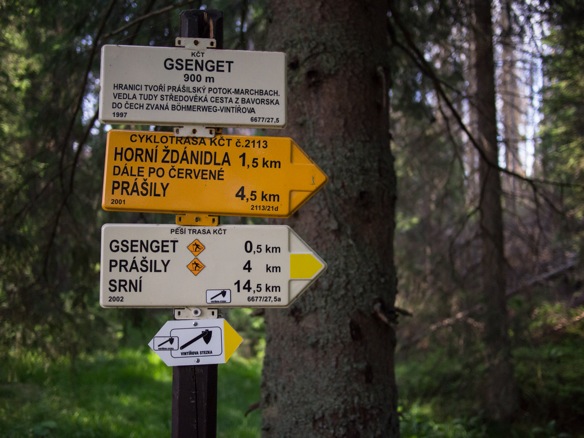
Czech, Sumava National Park

Ukraine, Polonina Borzhava

France, Traversée du Massif Vosgien, Château Bernstein

Ukraine

Serbia

Slovakia, 1000 Miles Adventure
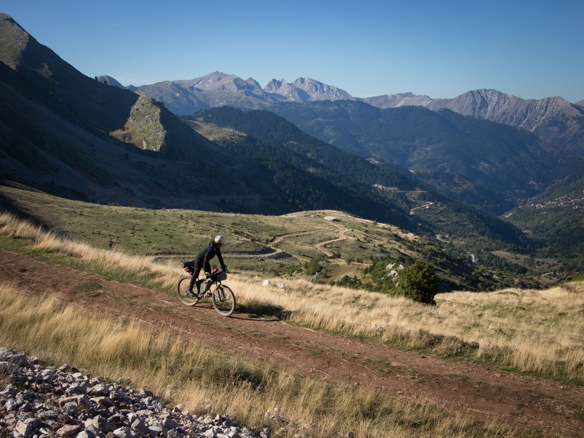
Greece, Bike Odyssey

France, TMV

Greece, Bike Odyssey

Luxembourg, GR5/E2 trail

Belgium, GR5/E2 trail

Guidebooks for routes in Spain.

Poland, The Red Trail: one of many PTTK resources for hikers and cyclists available in the mountains, often serving hot food and cold beer.

Maps in a Slovakian supermarket.
 Belgium, GR5/E2 trail
Belgium, GR5/E2 trail Albania
Albania






![20130814-P8141517[5].jpg 20130814 P8141517 5](https://gypsybytrade.files.wordpress.com/2014/05/20130814-p81415175.jpg?w=584&h=876)






![20130814-P8141504[5].jpg 20130814 P8141504 5](https://gypsybytrade.files.wordpress.com/2014/05/20130814-p81415045.jpg?w=584&h=388)

![20130813-P8131489[5].jpg 20130813 P8131489 5](https://gypsybytrade.files.wordpress.com/2014/05/20130813-p81314895.jpg?w=584&h=388) \
\



















































































































































